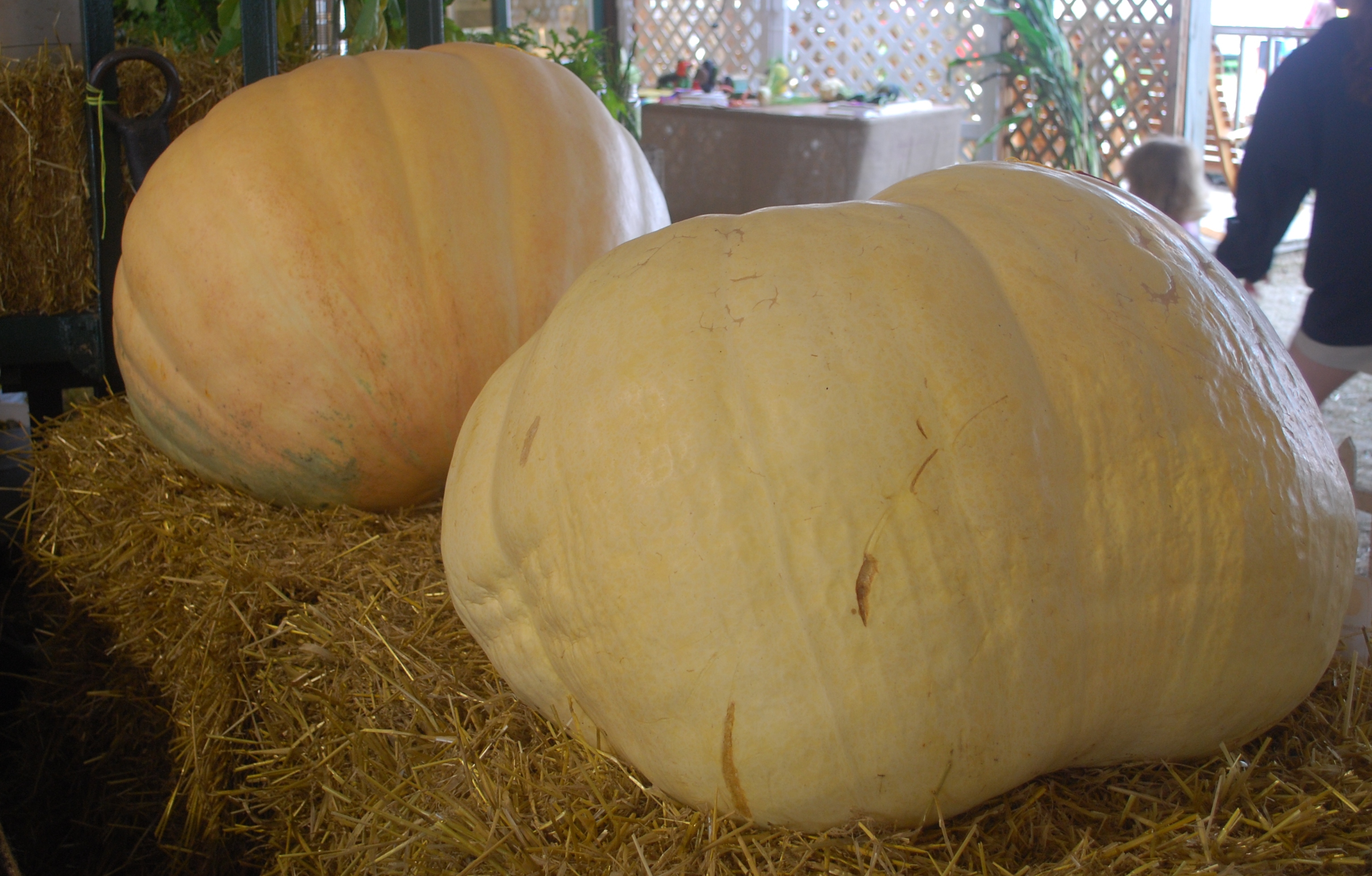Big Max on:
[Wikipedia]
[Google]
[Amazon]
 Big Max is a large variety of
Big Max is a large variety of
pumpkin
A pumpkin is a vernacular term for mature winter squash of species and varieties in the genus ''Cucurbita'' that has culinary and cultural significance but no agreed upon botanical or scientific meaning. The term ''pumpkin'' is sometimes use ...
of the species ''Cucurbita maxima
''Cucurbita maxima'', one of at least five species of cultivated squash, is one of the most diverse domesticated species. This species originated in South America from the wild subspecies ''Cucurbita maxima subsp. andreana'' over 4,000 years ago. ...
'' that can exceed and in diameter under ideal growing conditions. They are often bright orange in color, with fine-grained, yellow-orange flesh. The skin, deeply ribbed and slightly roughened, can grow to be thick, making them favorable for storage. The flesh has been described as good for canning and freezing. However, their size often makes utilizing them for culinary uses cumbersome, and they lack the flavor and texture present in smaller pumpkin varieties.
The variety was hybridized for its size during the early 1960s. Specimens as large as 300 pounds have been grown. Individual fruits are round to slightly flattened.
Best planted between two and four weeks after the average last frost, Big Max pumpkins typically become ripe 110 to 120 days after sowing
Sowing is the process of planting seeds. An area or object that has had seeds planted in it will be described as a sowed or sown area.
Plants which are usually sown
Among the major field crops, oats, wheat, and rye are sown, grasses and leg ...
. The cultivar
A cultivar is a type of cultivated plant that people have selected for desired traits and when propagated retain those traits. Methods used to propagate cultivars include: division, root and stem cuttings, offsets, grafting, tissue culture, ...
requires large amounts of room to grow properly, and to achieve the maximum size, it is recommended to limit each vine to one fruit. They are harvested before the first light frost, when the plant's foliage dies. Seedlings sometimes emerge in five to ten days, though germination may take up to 14 days. Although recommendations vary, seeds are often planted at a depth of , spaced apart, in hills of between five and eight seeds. Hills are spaced apart, and thinned to two to three plants.
See also
*List of gourds and squashes
This list of gourds and squashes provides an alphabetical list of (mostly edible) varieties (cultivars) of the plant genus ''Cucurbita'', commonly called gourds, squashes, pumpkins and zucchinis/courgettes. Common names can differ by location. The ...
References
{{Squashes and pumpkins Squashes and pumpkins